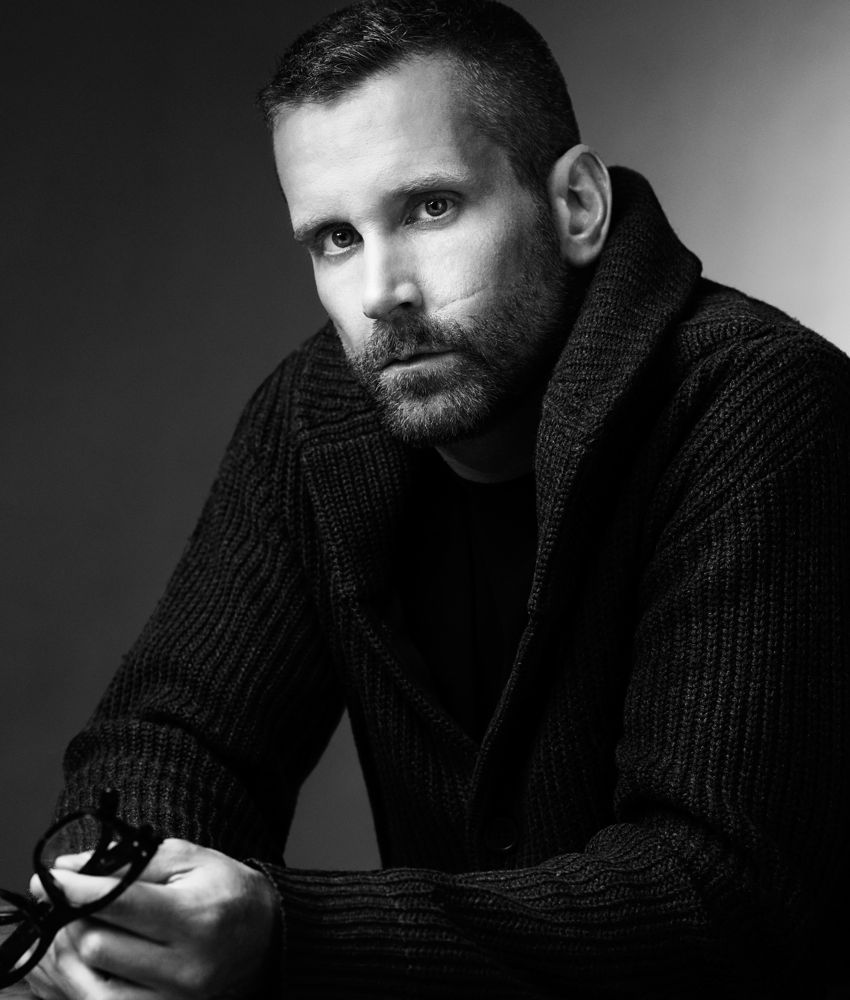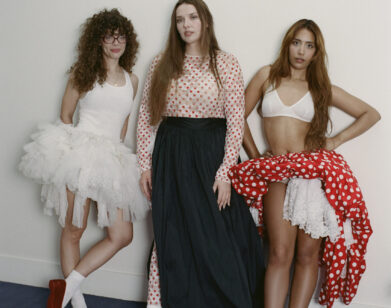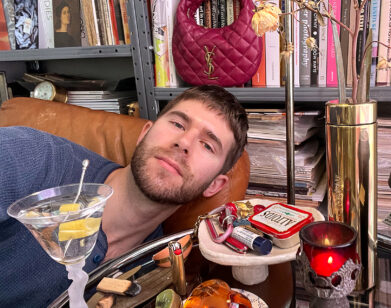Chris Gay

I think what makes people succeed is grit—intestinal fortitude. It’s not a requirement to get into our business, but you definitely need it to be able to stay. Chris GaY
DAVID COLMAN: You started working at an agency in Boston.
CHRIS GAY: Yes, Ford—but the woman’s name was actually Candy Ford. Basically, while there, I met a bunch of people from New York and ended up in New York City shortly after I graduated from college in 1996.
COLMAN: What’s the first place you started working in New York?
GAY: Next Model Management. The first model I ever started working with was Malgosia Bela. She really had an exceptional career; she’s a wonderful, smart, lovely girl. Malgosia had this instantaneous success, so I remember trying to move into my first apartment in New York and then immediately jumping on a plane to Milan that day. She booked two Italian Vogue covers her second season as a model—just about five months into her career. So for that to be my first job was like having an e-ticket to New York City, whether it was going to a fancy party or traveling the world. But at the same time it was like, “Okay, I’m going to go to the party so I can get something to eat for dinner.” I would have, like, $70 a week to eat on.
COLMAN: How long did you work with her?
GAY: Maybe a year. Then, in 2000, I went to work for DNA, which was really fun.
COLMAN: That was when DNA was hitting its stride.
GAY: We were setting the agenda in fashion. We had Natalia Vodianova, Eugenia Volodina, Karolina Kurkova, Karen Elson. It was obviously a wonderful time. The Pandora’s Box opened when a lot of major designers started to use not just one brand-new girl but seven or eight brand-new girls. They started thinking, We don’t necessarily need the established girls so much. So that was really a game changer. That was in 2005 or 2006.
COLMAN: What has changed since even then?
GAY: Now, it’s crazy. We cycle through models so fast, it’s ridiculous. Someone will be shooting an editorial and be like, “Okay, I want 14 brand-new faces that no one has ever seen.” That really came from the Internet. It sped the process for more new faces coming in. We’ve started replacing “good” with “new.”
COLMAN: Were you interested in fashion growing up?
GAY: No. Fashion to me was MTV. That was my fashion exposure—Cindy Crawford, Matthew Rolston, Stéphane Sednaoui, and music videos by people like that. What I saw from Fabien Baron or Steven Meisel were music-related more than House of Style at the time. You would see top models like Naomi and Linda Evangelista in music videos.
COLMAN: Were you surprised to find that you liked working in fashion?
GAY: I found the pace and the energy and the entire environment wonderful and exhilarating—but I definitely used to laugh at myself and say, “All right, the difference between working with models and athletes is whether I’m going to have my business meetings at Nobu or at Hooters.”
COLMAN: I’ve always been fascinated by the similarities between sports and fashion. They seem more similar than even, say, fashion and art.
GAY: Some things are very similar. You’re dealing a lot with natural talent, talent you’re born with. With modeling, you’re taking a girl, whether she’s one of the best-looking or strangest-looking kids from her hometown, bringing her to New York City, getting her an apartment, an allowance, and sending her to appointments. It’s a bit like force-feeding a career to somebody. It’s similar to being an athlete in the sense that when you’re nine years old as a baseball or basketball player, you’re already separated out and moved onto this intense track. Everyone is super-nice and friendly in the beginning, but a lot of kids are not prepared for how competitive it is. Somebody once asked me, “Why are there all these problems with these American girls?” It’s because they’re watching these reality shows and they think you automatically need to bring the drama. That gets corrected pretty fast. The models that have longevity understand the nuances of working with these extraordinarily creative people who also have delicate personalities. You need to be able to do that and transform from job to job. At the same time now, how much you’re recognized by people has become very important for brands. Everyone’s looking at their value in social media. I represent the one who’s most well known via social media, Adriana Lima. She’s got huge numbers—I mean, she crushes it.
COLMAN: What’s so great about her social media skills?
GAY: She’s not trying to be anybody. She doesn’t put herself on a pedestal. She’s really good at relating to people. We were in Turkey doing a TV show, and almost every single on-air presenter in Turkey has bleach-blond hair. Not one girl in the studio audience looks anything like any of these women, and Adriana walks in and the girls are like, “Wow, her hair is like mine and her skin color is like mine.” From Brazil to Istanbul, she’s really taps into something.
COLMAN: How does that differ from other girls that you’ve worked with?
GAY: Well, sometimes there’s overexposure. Our business is, for the most part, aspirational, so if you do something or post something that takes that allure away … You can really alienate the sensibilities of a photographer or a stylist with what you post on Instagram. So the allure or mystery or your ability to transform can basically be killed if it’s not carefully managed.
COLMAN: What are some of your biggest achievements?
GAY: Finding Liu Wen. She was the first Asian model and the first Chinese model to ever have a global cosmetic deal with Estée Lauder. That was such a huge achievement, because Asia is so fractured over how an Asiatic face should look. I had the remarkable opportunity to work with Jane Hudis and John Demsey at Estée Lauder on this, and they’d reached out to their Asian offices for feedback, but none of them could really agree. Should we have a Chinese model? Should we have a Japanese model? And so on. Then Jane just decided, “This is the girl I want, and I don’t care about only targeting Asia, because I’m taking her global.” That was probably the only time I felt, “Wow, I’m actually part of some socially significant moment in our business.” Because, yes, the buying power in China right now is impressive, but this is a very visceral thing. When they announced Liu Wen at this event, and she came up on stage, people had tears in their eyes. It was like their daughter winning homecoming queen. Then on top, the Liu Wen story is amazing. Liu Wen is from the countryside, so when she was modeling in China, they wouldn’t even let Liu Wen get into the casting. They were like, “Farm girl, go home.” There was a fashion editor working with Numéro in China, and they were showing him 50 girls for a story and he was like, “Bring me a girl you don’t want to show me.” And they called in Liu Wen, and he was like, “Why don’t you want to show me this girl? This is the only girl who hasn’t bleached her hair, plucked out all of her eyebrows, or messed up her skin!” So he tells her, “You need to leave and go to Paris.” She went, and two weeks later, she was walking down the runway for Karl Lagerfeld and Jean Paul Gaultier, and a few months later working for Steven Meisel for Calvin Klein’s ck one.
COLMAN: That is an amazing story. What about your story? You just left Marilyn to work at a different agency, right?
GAY: I actually just left Marilyn in June to run the Society Management, which is part of Elite Europe. Elite World is basically the largest agency in the world, and but they don’t own the Elite name in North America—it’s owned by a separate entity entirely. So they operate under the company the Society. Whether or not we’re able to reclaim the name is something we’re going to work on—so we’ll see. I started in July.
For more model agents, click here.






